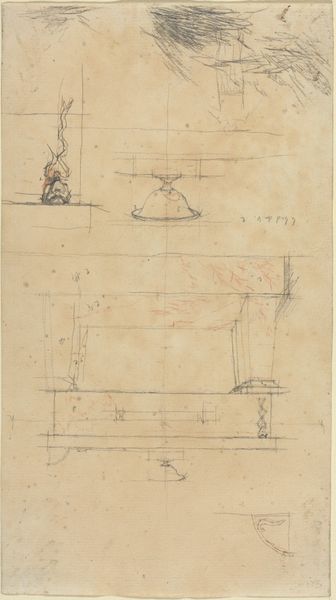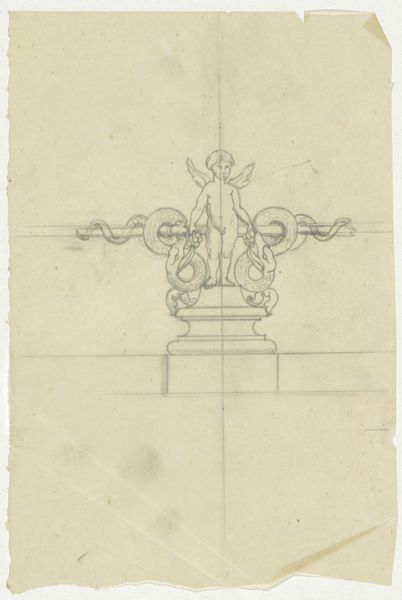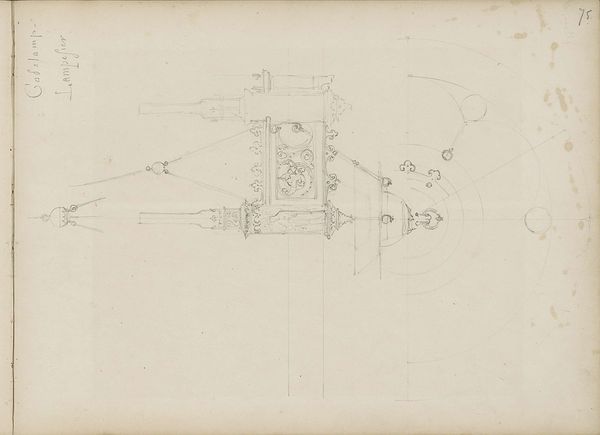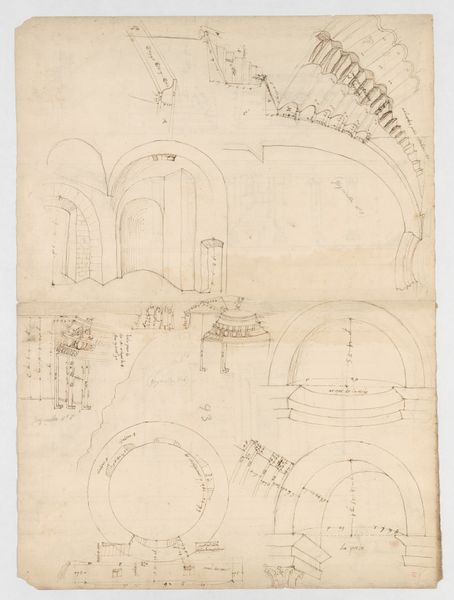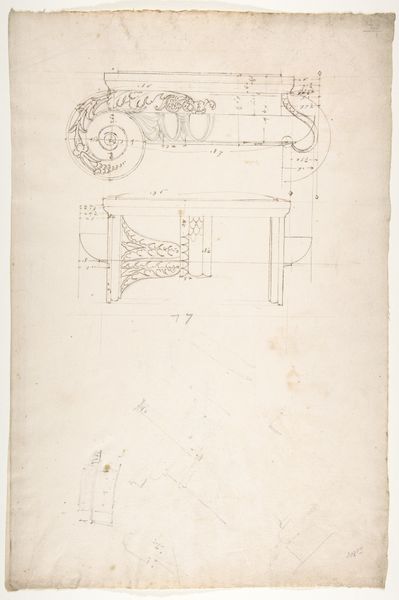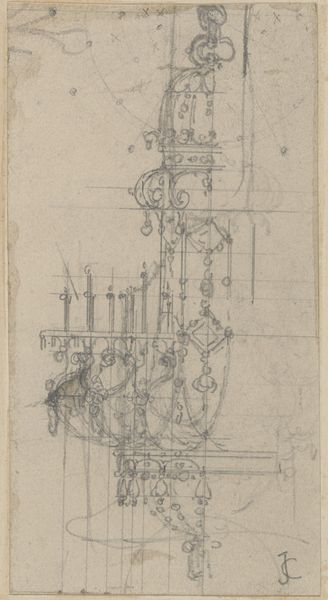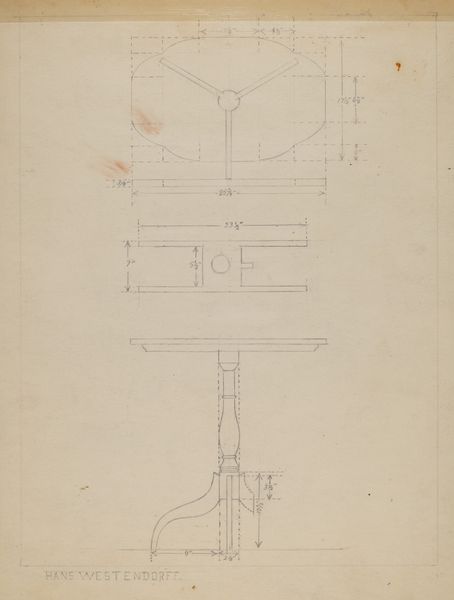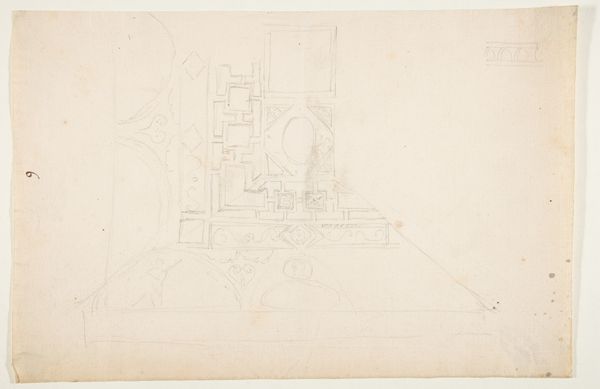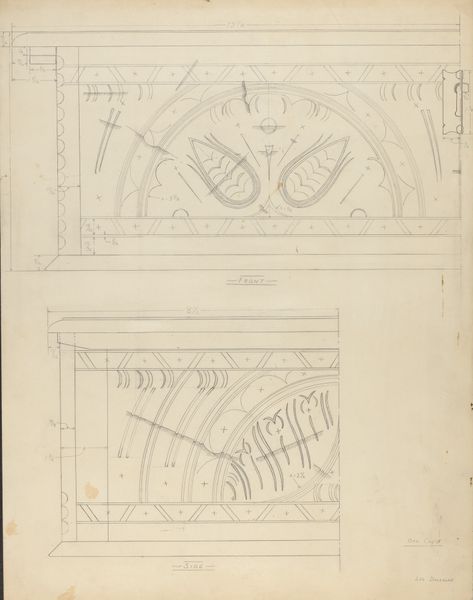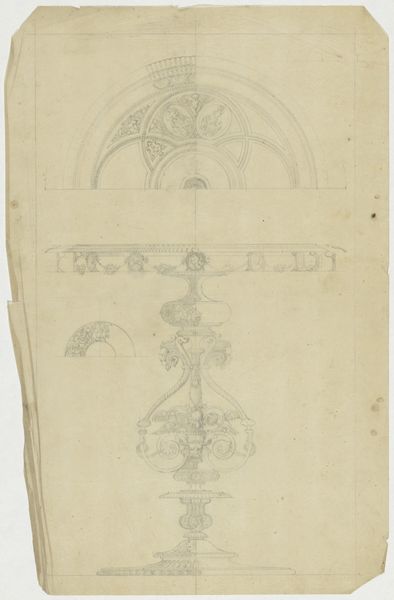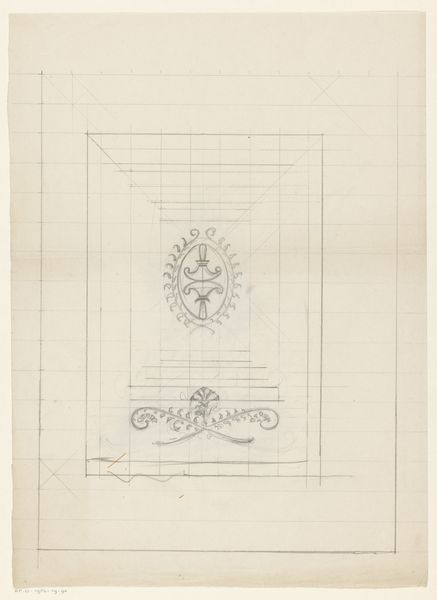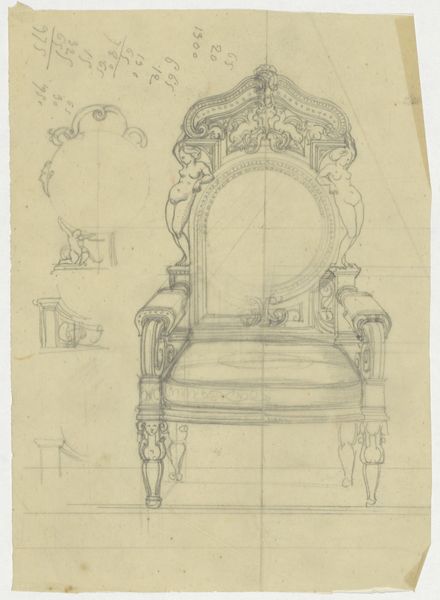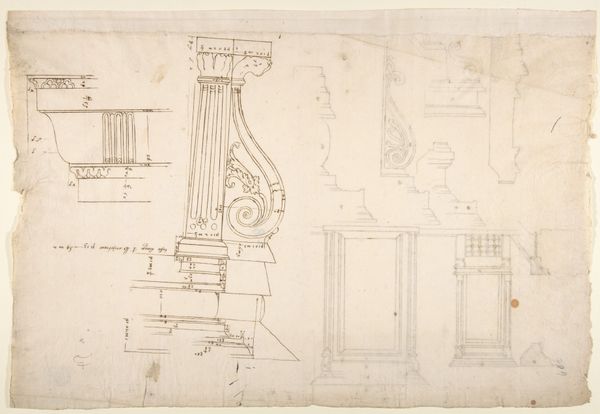
Design for the Tomb of Christophe de Thou (d. 1582) 16th century
0:00
0:00
drawing, print
#
drawing
# print
#
form
#
11_renaissance
#
line
#
history-painting
Copyright: Public Domain
Curator: Here we have an intriguing 16th-century drawing: a "Design for the Tomb of Christophe de Thou" now residing at the Metropolitan Museum of Art. Editor: It's fascinating, almost spectral. The delicate lines and subtle shading create an ethereal quality, a ghostly monument barely there. Curator: Indeed. I'm particularly struck by the meticulous use of line. Note how each element—the columns, the portrait medallions, the base—is delineated with a precise, almost architectural, quality. It speaks volumes about the Renaissance fascination with form. Editor: And the labor. One can only imagine the hours, perhaps days or even weeks, dedicated to crafting each curve and contour of this sketch. Who was this artist, and under what conditions did they toil? It's difficult to ignore the material realities informing such a refined design, considering the social dynamics behind patronage and art production in the 16th century. Curator: A valid point. Though the focus on pure visual structure and design is overwhelming: notice how the vertical thrust of the columns is balanced by the horizontality of the base and entablature, a testament to formal Renaissance sensibilities. The medallions act as visual anchors drawing the eye inward. Editor: Yet, a tomb is intrinsically about materiality, decay, remembrance. While the forms adhere to established conventions of Renaissance design, one should think about the social symbolism inherent in memorializing powerful figures like Christophe de Thou, examining the rituals and commodities related to mourning during the period. This image acts as a fragment, prompting questions beyond pure aesthetics. Curator: Ultimately, whether one is more engaged with material concerns or formalism, the power of the image lies in its ability to invite closer viewing. Editor: A valuable perspective on labor, power, form and commemoration embodied by lines. It certainly invites contemplation.
Comments
No comments
Be the first to comment and join the conversation on the ultimate creative platform.
